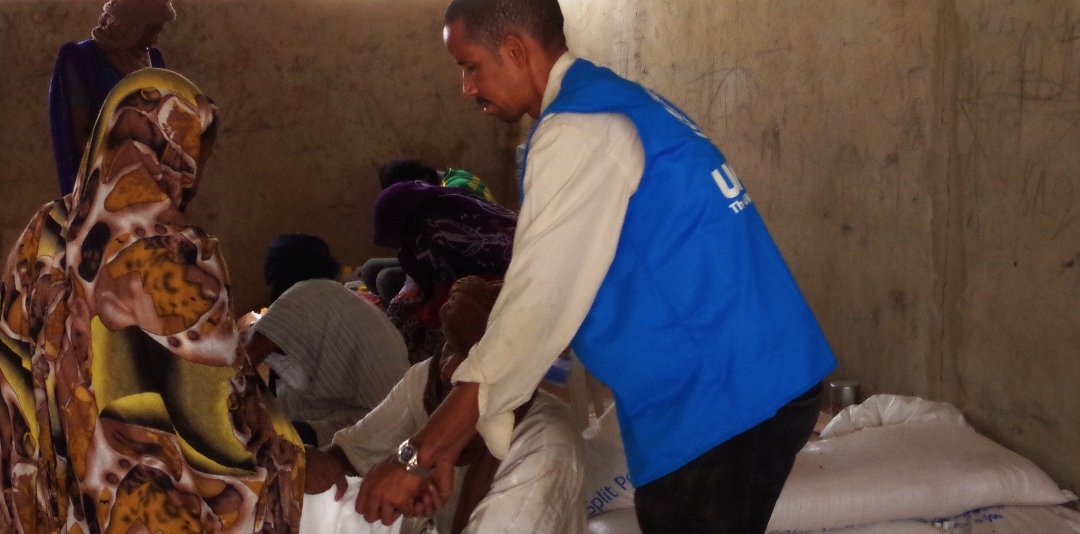There are many ways to arrange the proverbial “last mile” before relief reaches people. Since 2014, UNHCR has been testing software created together with the UPS Foundation to speed up the distribution of goods and services to refugees, and to link distribution data with registration data.
The software, called ReliefLink, tracks who has received which support, replacing a multitude of paper records that may cause errors and delays, not to mention breaches in confidentiality.
Initial field tests have gleaned mixed results. In Lebanon, testing was cut short as the number of Syrian refugees soared and UNHCR’s entire focus was on response. Tests in Dollo Ado, Ethiopia were scheduled for 2015. However they have been delayed for a variety of reasons, including personnel changes, security concerns, and unforeseen coding needs.
Results have been more promising in Bassikounou, Mauritania, where ReliefLink has so far helped to distribute shelter to more than 300 families, and food to more than 100,000 individuals. Distribution times have been cut in half, and the software is increasingly being used in lieu of the laptop and scanner UNHCR staff members usually carry around for registration and distribution.
UNHCR will build on this success — and lessons learned from Lebanon and Ethiopia — to improve and where appropriate, expand the use of ReliefLink in 2016. Already, a series of small errors in data output, device configuration and server synchronization have been fixed. Software has been updated to allow usage on Android devices and to resolve hang-ups in the synchronization of large pools of information. Screen resolution has been increased and new ways to input and filter data have been added.
Lessons Learned
Delays and setbacks have brought with them invaluable lessons learned, however. Here are three of them:
- Projects should be field-led from inception: Innovation projects need to be strongly driven by the field operation based on a clear challenge that they’ve identified. Solving this challenge remains a clear motivation for testing possible solutions. This holds true for ReliefLink testing.
- Testing should be timed appropriately to avoid conflicting priorities: Sometimes during emergencies, people cannot, and should not prioritise testing new technology solutions. The priority is to respond to the emergency. More care must be applied to the scheduling of tests so that ongoing emergency support is always prioritized.
- The focus should always be on the process, not the tool: Sometimes, even with the best of intentions, we engage in push innovation. That means we put the focus on (what we think) is a newer, better tool, and then try to find an operation that wants to test it. In fact, we should focus on the process: working together with an operation to identify a challenge and then find the most appropriate solution.
Looking ahead
Taking into account key lessons learned from testing ReliefLink, future plans for the project include:
- Facilitate increased adoption:
- We are launching a call for Expression of Interest to all field operations who would like to revisit their distribution processes in 2016. This aims to geographically expand opportunities for operations to consider ReliefLink as a possible solution.
- We are also considering the viability of ReliefLink as a possible last-mile solution to be included in other projects within UNHCR.
- Revisit the testing plan and schedule for Dollo Ado, Ethiopia.
We’re always looking for great stories, ideas, and opinions on innovations that are led by or create impact for refugees. If you have one to share with us send us an email at [email protected]
If you’d like to repost this article on your website, please see our reposting policy.

